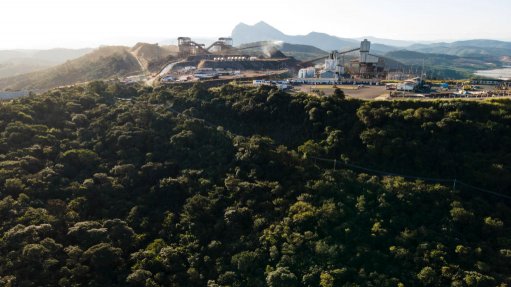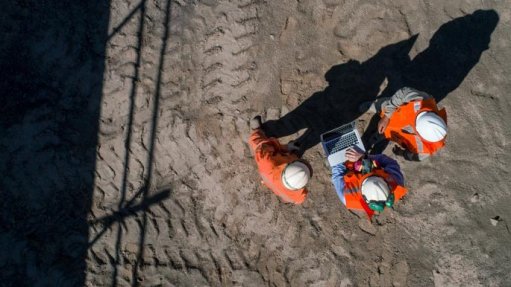Balancing technology advancements can help industry thrive
Stakeholders need to balance the multiple impacts of technological advancements in the mining industry to enable the industry and its employees to thrive, says engineering consulting company Zutari technical director Pieter Scholtz.
There are many advantages to such technological advancements, but job security and the skills training of current and future employees must be carefully considered. This will enable the industry to improve its longevity, while enabling host communities to benefit, adds Scholtz.
“One of the biggest advantages is from a health and safety perspective because as we improve the technology associated with actual mining, we can take people out of dangerous situations and replace them with machines.”
Another advantage is job creation, as technological advancements make it feasible to mine and efficiently process difficult ore deposits effectively. This creates new job opportunities associated with technology such as programming, equipment manufacturing and maintenance. It allows deposits that can’t be mined or processed by traditional means to become viable, therefore creating additional jobs.
“Technological advancements are instrumental, and will continue to be, in the future sustainability of the mining sector,” Scholtz notes.
A short-term disadvantage, however, is potential job losses, owing to machinery replacing mineworkers at the coalface. Mineworkers do not have the necessary skills set to immediately handle the tasks associated with the programming and manufacturing of the required equipment, and Scholtz explains that this risk can be managed by upskilling staff, as well as people in the surrounding communities, as the operation transitions from a labour-intensive to a more technologically driven operation.
In the upskilling process, companies need to focus on the “the employees of today” and the “employees of the future”.
Skills training programmes for existing employees need to be customised for each employee in line with the national, provincial, regional, district and municipality planning frameworks that are applicable to each employee’s labour sending area.
This ensures that the portable skills training is aligned with the economic growth agenda and ensures that the skills set will be in demand in that particular area.
To further ensure the job security of current employees, companies need to structure their social and labour plan expenditure associated with enterprise and supplier development to include a job-creation component that is linked to local procurement of technologically advanced equipment and machinery.
Employees can further be trained to do jobs that require skills they already have but which need to be applied for a different purpose.
Scholtz emphasises that companies do not have to upskill employees on their own. There is grant funding available for initiatives that are structured in a specific manner, especially if they are linked to the United Nations Sustainability Development Goals.
“By structuring it a little differently, you can actually scale the potential impact by attracting other investors from the rest of the private sector to work with you.”
Further, government can play a significant role by creating policy and regulatory frameworks within which the private sector can thrive. Moreover, through collaborative engagement with government, there can be public-sector support in scaling the impact of initiatives started by the mines.
The private and public sector should work together to ensure integrated development is achieved. This can only be done through transparent and collaborative engagement.
The mining sector can ensure its own survival, improve health and safety for its employees and unlock sustainable jobs and enterprise opportunities for its communities by embracing technological advancements, and restructuring social and labour plans and enterprise and supplier development expenditure.
Comments
Press Office
Announcements
What's On
Subscribe to improve your user experience...
Option 1 (equivalent of R125 a month):
Receive a weekly copy of Creamer Media's Engineering News & Mining Weekly magazine
(print copy for those in South Africa and e-magazine for those outside of South Africa)
Receive daily email newsletters
Access to full search results
Access archive of magazine back copies
Access to Projects in Progress
Access to ONE Research Report of your choice in PDF format
Option 2 (equivalent of R375 a month):
All benefits from Option 1
PLUS
Access to Creamer Media's Research Channel Africa for ALL Research Reports, in PDF format, on various industrial and mining sectors
including Electricity; Water; Energy Transition; Hydrogen; Roads, Rail and Ports; Coal; Gold; Platinum; Battery Metals; etc.
Already a subscriber?
Forgotten your password?
Receive weekly copy of Creamer Media's Engineering News & Mining Weekly magazine (print copy for those in South Africa and e-magazine for those outside of South Africa)
➕
Recieve daily email newsletters
➕
Access to full search results
➕
Access archive of magazine back copies
➕
Access to Projects in Progress
➕
Access to ONE Research Report of your choice in PDF format
RESEARCH CHANNEL AFRICA
R4500 (equivalent of R375 a month)
SUBSCRIBEAll benefits from Option 1
➕
Access to Creamer Media's Research Channel Africa for ALL Research Reports on various industrial and mining sectors, in PDF format, including on:
Electricity
➕
Water
➕
Energy Transition
➕
Hydrogen
➕
Roads, Rail and Ports
➕
Coal
➕
Gold
➕
Platinum
➕
Battery Metals
➕
etc.
Receive all benefits from Option 1 or Option 2 delivered to numerous people at your company
➕
Multiple User names and Passwords for simultaneous log-ins
➕
Intranet integration access to all in your organisation





















